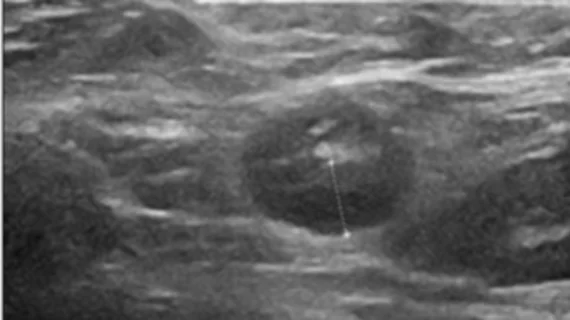COVID booster side effects: How long does axillary lymphadenopathy last after vaccination?
Axillary lymphadenopathy following COVID vaccination and/or boosters is a finding all radiologists must be mindful of when interpreting imaging, but new data clarify the timeline for when the side effect should resolve.
According the new research published in the American Journal of Roentgenology, axillary lymphadenopathy that occurs following a COVID booster has a mean resolution time of 102 days, or 84 days after being identified on ultrasound. This is a shorter resolution timeframe compared to lymphadenopathy seen following initial COVID vaccination, but reaffirms imaging guidelines pertaining to vaccines that are already in place, experts involved in the new research explained.
“Findings support a follow-up interval of at least 12 weeks, as well as avoidance of delaying screening mammography, for suspected vaccine-related lymphadenopathy after booster doses,” noted first author Eralda Mema, MD, of Weill Cornell Imaging at New York Presbyterian.
Between September of 2021 and December of 2022, experts analyzed the cases of 54 patients with unilateral axillary lymphadenopathy ipsilateral to a booster dose of an mRNA COVID-19 vaccine. The patients’ lymph node swelling was monitored via ultrasound, and their medical records were used to identify any factors that might contribute to the swelling’s time to resolution.
Based on these records, the experts were unable to associate the vaccine side effect with age, vaccine booster brand (Moderna vs. Pfizer) or history of breast cancer.
Researchers also compared these cases to a previous set of data from women who experienced axillary lymphadenopathy following their initial COVID vaccine series. Time to resolution for that group was recorded as 129 ± 37 days. In comparison, side effects of boosters were shown to last 102 ± 56 days in this study.
Of note, the team excluded cases in which follow-up imaging was still pending, “which may have biased the sample toward inclusion of patients whose lymphadenopathy resolved rapidly,”
The study abstract is available here.

